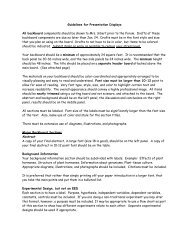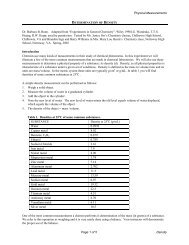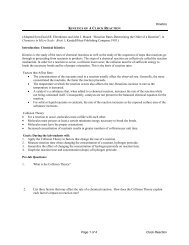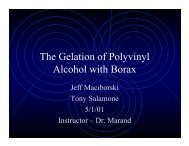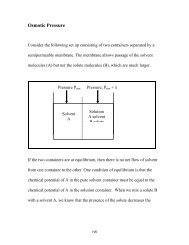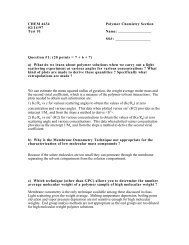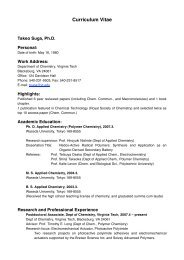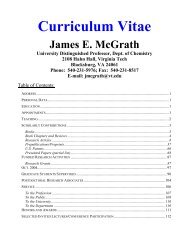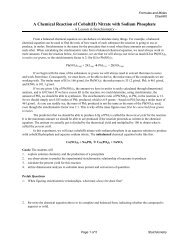Carlier Group Gaussian User Manual - Virginia Tech
Carlier Group Gaussian User Manual - Virginia Tech
Carlier Group Gaussian User Manual - Virginia Tech
You also want an ePaper? Increase the reach of your titles
YUMPU automatically turns print PDFs into web optimized ePapers that Google loves.
<strong>Carlier</strong> <strong>Group</strong> <strong>Gaussian</strong> <strong>User</strong> <strong>Manual</strong> 39<br />
In this case, the molecule is positively charged and therefore the sum of all charges<br />
equals one. Mulliken charges are also available with hydrogens summed into heavy<br />
atoms. These are found immediately after the Mulliken atomic charges.<br />
B. Natural Bond Order (NBO)<br />
NBO analysis gives the occupancy of the bonds. It treats a bond as a Lewis type 2<br />
electron bonds. The orbital is said to be occupied, if the number of electrons in the<br />
orbital is greater than 1.95.<br />
The NBO analysis can be done as a single point calculation with the route section as<br />
follows:<br />
%mem=4GB<br />
%scr=*<br />
%rwf=*<br />
%int=*<br />
%d2e=*<br />
%nosave<br />
%chk=*<br />
# B3LYP/6-311++G(d,p) geom=checkpoint Pop=NBORead<br />
Protonated epoxide 5H+. Starting geometry B3LYP/6-311+G**<br />
1 1<br />
$nbo bndidx $end<br />
The end line “$nbo bndidx $end” is required to calculate different types of Bond orders<br />
including NBOs, Wiberg bond index, AO and MO bond orders.<br />
NBO output can be extracted from the output file using the command<br />
more *.out<br />
followed by<br />
/Natural<br />
If the analysis is done as a part of a geometry optimization, then the NBO analysis is<br />
done twice, once at the beginning of the optimization and once at the end. In this case,<br />
the ‘more’ command should be followed by<br />
/Optimized<br />
/Natural



